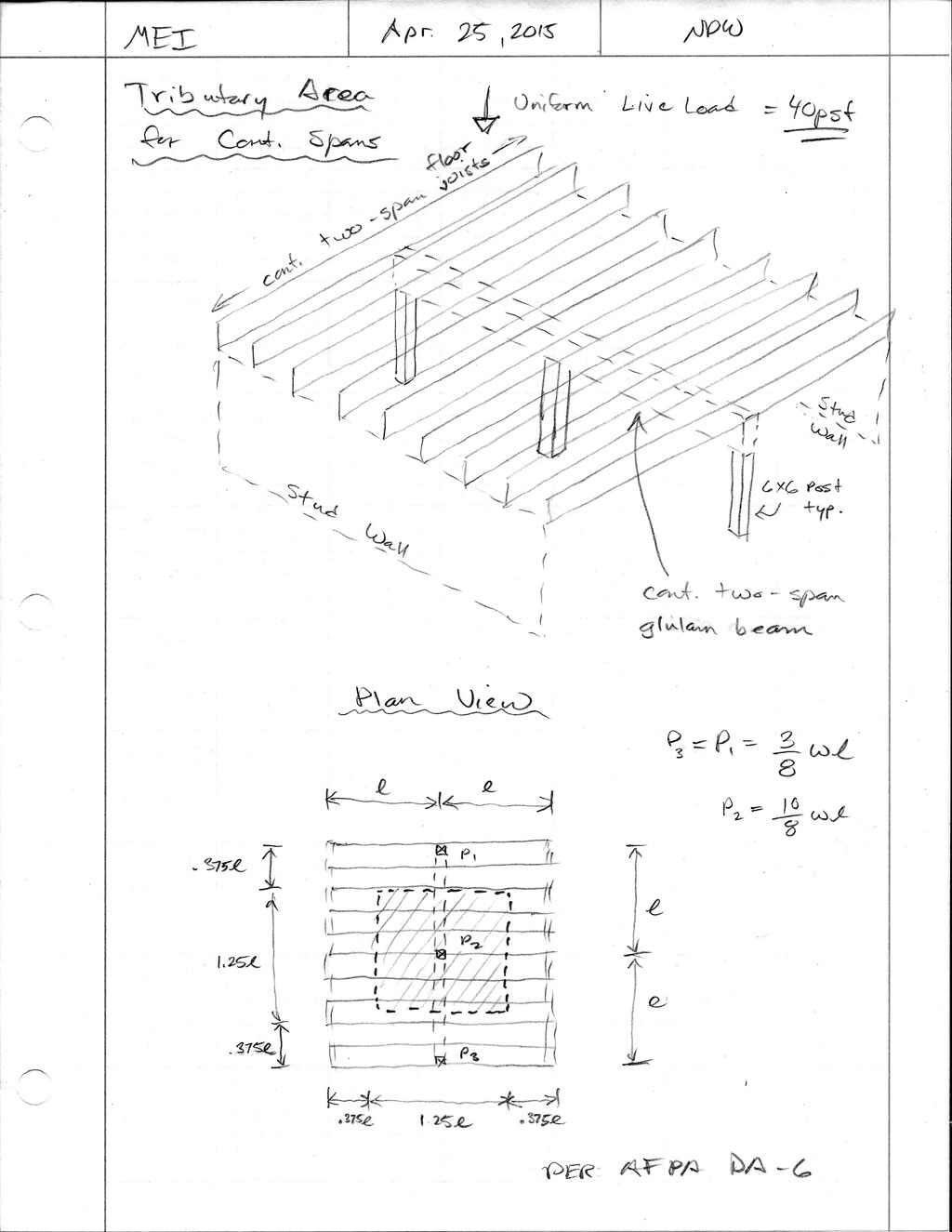medeek
Structural
- Mar 16, 2013
- 1,104
I have a continuous beam with two equal spans. Consequently the bearing load is considerably more at the center post than the two end posts. I'm wanting to calculate the tributary area for this post. If the total beam length is 2L am I correct in saying that the trib. length for this post would be 5L/4? Then KLLAT = 5L/4 x W x 4 = 5L x W
A confused student is a good student.
Nathaniel P. Wilkerson, PE
A confused student is a good student.
Nathaniel P. Wilkerson, PE

